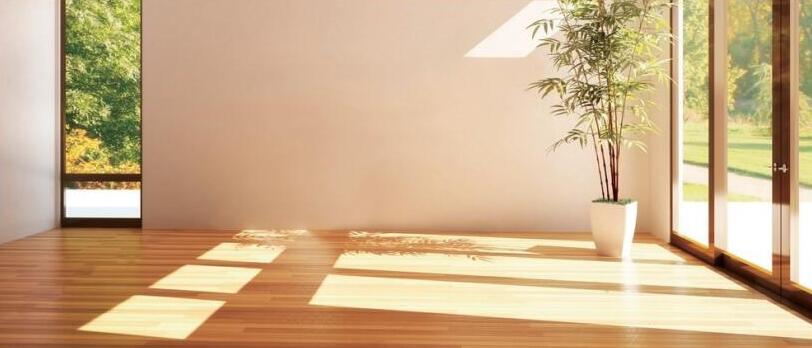
When it comes to choosing flooring materials, you have a lot of different options. There are dozens of types of stone, tile, and wood you can use, along with cheaper alternatives that can mimic those materials without breaking the bank. Two of the most popular alternative materials are luxury vinyl plank flooring, and stone polymer composite flooring: LVP and SPC. What’s the difference between them? And which is the best option for your home? Here’s a brief overview of these two flooring products.

Luxury vinyl planks are made of compressed layers of vinyl, with a high resolution image overlaid onto them, to mimic the look of another material. Planks are generally used to mimic hardwood, because the shape is similar to real wood planks. The high res image allows vinyl to look like virtually any other material, though, such as stone, tile, and more. LVP has several layers, but the main one is its vinyl core, which makes the planks durable but flexible.
Stone polymer composite flooring is similar, in that it includes a high resolution image, overlaid onto vinyl and coated with a transparent wear layer to protect the floor from scratches, stains, fading, etc. However, the core material in SPC is a hybrid of plastic and compressed limestone powder. This makes the planks hard and rigid, rather than soft and flexible.
The two materials are similar in many ways. They’re both waterproof, scratchproof, and generally fairly durable. They’re easy to install yourself, without the use of glues and solvents, and easy to maintain, with regular sweeping to get rid of dust, and a quick mop to get rid of spills. And they’re both significantly cheaper than the materials they’re acting as a substitute for.
So, besides flexibility, what differences are there between the characteristics of LVP and SPC flooring? The rigid structure of SPC gives it a few advantages. While both can be installed over virtually any solid subfloor, LVP needs its subfloor to be completely level, and free of any dents, obstructions, etc. The flexible material will take on the shape of any imperfections, whereas SPC will keep its own shape, regardless of the floor below it.
By the same token, SPC is also more durable, resistant to dents and other damage. It will last longer, hold up better to wear. The rigidity of SPC also allows it to provide more support underfoot, while LVP’s pliability gives it a softer, more comfortable feel for walking on. SPC is also slightly thicker than LVP, and its look and texture tend to be a bit more realistic.
SPC has many advantages over LVP, but it does have one drawback. Its rigid, composite construction makes it more expensive than vinyl. While both are still cost-effective compared to wood, stone, or tile, if you’re on a tight budget, LVP is likely a better bet.
This is just a brief overview of the two flooring materials. There are plenty of other pros and cons of each, depending on your specific situation. So which flooring material is best for you? Talk to a flooring expert who can help you weigh the pros and cons of stone polymer composites vs. luxury vinyl planks, and decide which one best meets your home’s needs and can serve you in good stead for years to come.
Previous: WPC vs SPC vs LVT Flooring